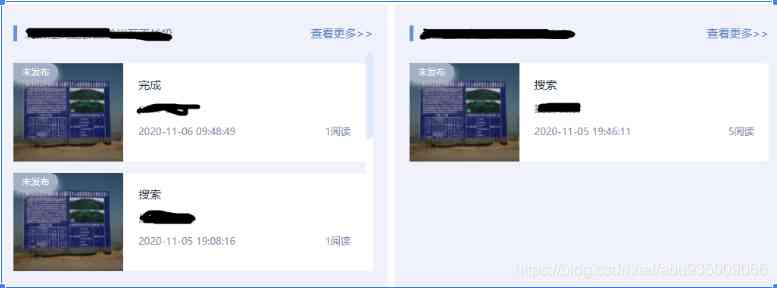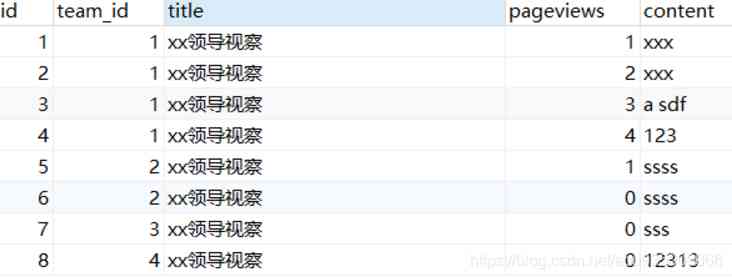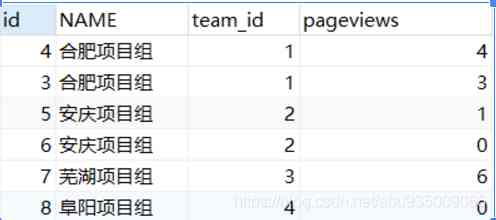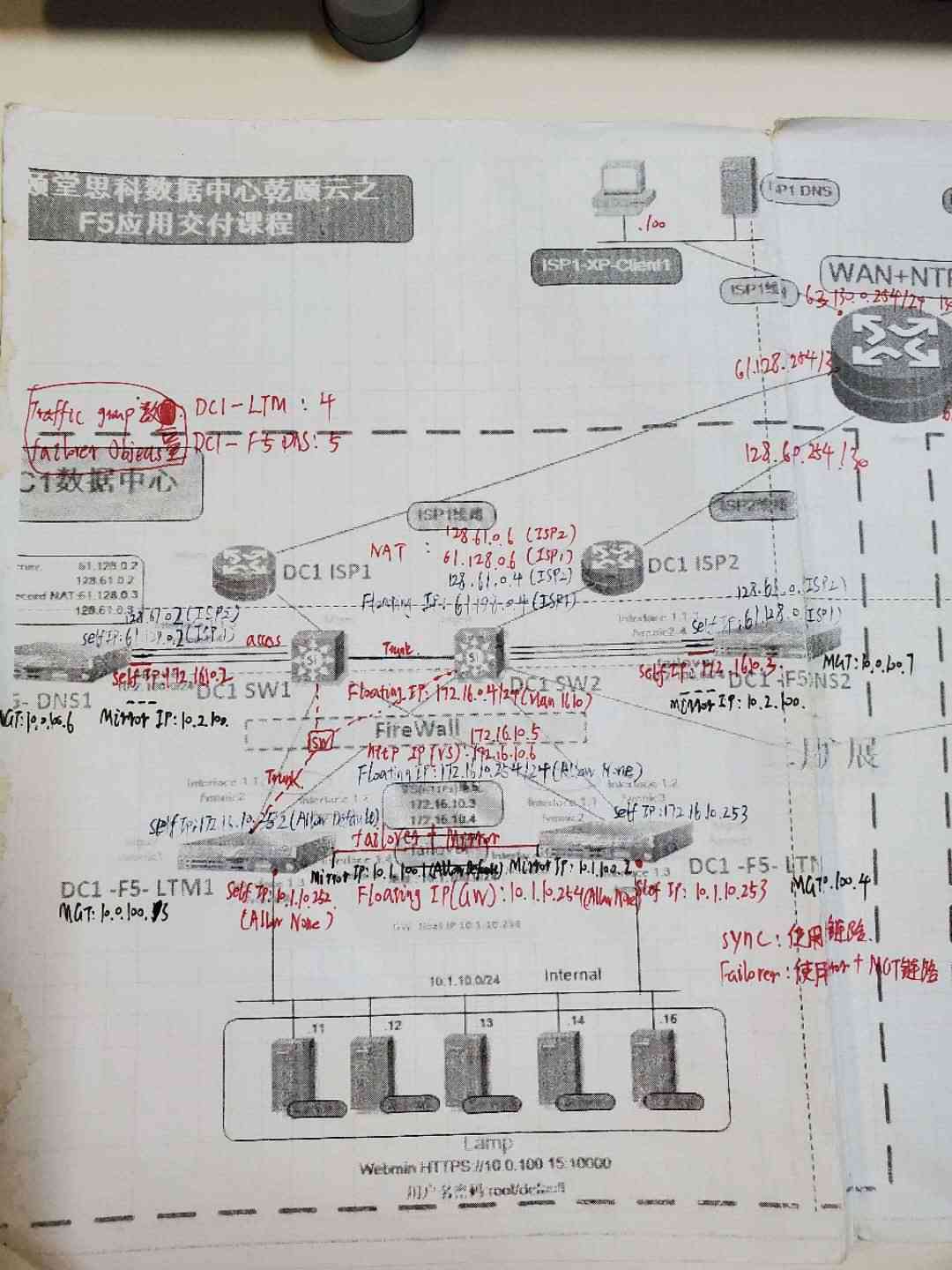当前位置:网站首页>After SQL group query, get the first n records of each group
After SQL group query, get the first n records of each group
2020-11-09 10:51:00 【osc A 3gbrdm】
Catalog
One 、 background
lately , There is a functional requirement in development . The system has an information query module , Ask for information to be presented in card form . Here's the picture :

Show the cards according to the project team , Each project group shows the most read TOP2.
Demand analysis : Group by project group , Then take the top of each group with the most reading 2 strip .
Two 、 Practical analysis
be based on Mysql database
The table definition
1、 The project team :team
| id |
Primary key |
| name |
Project team name |
2、 Information sheet :info
| id |
Primary key |
| team_id |
The project team id |
| title |
Information name |
| pageviews |
Browse volume |
| content |
Information content |
info Table data is shown in the figure below :

Let's preview Select Basic knowledge of
Writing order :
select *columns*
from *tables*
where *predicae1*
group by *columns*
having *predicae1*
order by *columns*
limit *start*, *offset*;Execution order :
from *tables*
where *predicae1*
group by *columns*
having *predicae1*
select *columns*
order by *columns*
limit *start*, *offset*;
count( Field name ) # Returns the total number of records in this field in the table
DISTINCT Field name # Filter duplicate records in the field
First step : First find out the top two readings in the information sheet
info Information table self correlation
SELECT a.*
FROM info a
WHERE (
SELECT count(DISTINCT b.pageviews)
FROM info b
WHERE a.pageviews < b.pageviews AND a.team_id= b.team_id
) < 2 ;At first glance, it's hard to understand , Here's an example
for instance :
When the amount of reading pageviews a = b = [1,2,3,4]
a.pageviews = 1,b.pageviews It can take [2,3,4],count(DISTINCT b.pageviews) = 3
a.pageviews = 2,b.pageviews It can take [3,4],count(DISTINCT b.pageviews) = 2 # Yes 2 strip , That's the third place
a.pageviews = 3,b.pageviews It can take [4],count(DISTINCT b.pageviews) = 1 # Yes 1 strip , That's the second place
a.pageviews = 4,b.pageviews It can take [],count(DISTINCT b.pageviews) = 0 # Yes 0 strip , That is, the biggest The first name count(DISTINCT b.pageviews) Represents several values larger than this value
a.team_id= b.team_id Autocorrelation condition , It's about equal to grouping
therefore Top two Equivalent to count(DISTINCT e2.Salary) < 2 , therefore a.pageviews It can be taken as 3、4, Before the assembly 2 high

The second step : Put the watch again team And table info Connect
SELECT a.id, t.NAME, a.team_id, a.pageviews
FROM info a
LEFT JOIN team t ON a.team_id = t.id
WHERE (
SELECT count(DISTINCT b.pageviews)
FROM info b
WHERE a.pageviews < b.pageviews AND a.team_id= b.team_id) < 2
ORDER BY a.team_id, a.pageviews descThe results are as follows :

There is also a way to understand :
grouping GROUP BY + HAVING, This method can be used to debug the results step by step
SELECT a.id, t.NAME, a.team_id, a.pageviews, COUNT( DISTINCT b.pageviews )
FROM info a
LEFT JOIN info b ON ( a.pageviews < b.pageviews AND a.team_id = b.team_id )
LEFT JOIN team t ON a.team_id = t.id
GROUP BY a.id, t.NAME, a.team_id, a.pageviews
HAVING COUNT( DISTINCT b.pageviews ) < 2
ORDER BY a.team_id, a.pageviews DESCproblem : If the number of readings is the same , It just cracked .
Illustrate with examples :
When the amount of reading pageviews a = b = [1,2,2,4]
a.pageviews = 1,b.pageviews It can take [2,2,4],count(DISTINCT b.pageviews) = 3
a.pageviews = 2,b.pageviews It can take [4],count(DISTINCT b.pageviews) = 1 # Yes 1 strip , That is to say, they are tied for the second place
a.pageviews = 2,b.pageviews It can take [4],count(DISTINCT b.pageviews) = 1 # Yes 1 strip , That's the second place
a.pageviews = 4,b.pageviews It can take [],count(DISTINCT b.pageviews) = 0 # Yes 0 strip , That is, the biggest The first name count(DISTINCT e2.Salary) < 2 , therefore a.pageviews It can be taken as 2、2、4, Before the assembly 2 high , But there are three pieces of data

3、 ... and 、 summary
Demand transformation : We will find the first few in groups , It's self related , There are several numbers larger than this one
In fact, this is similar to LeetCode The difficulty is hard A database title of
185. All the employees with the top three salaries in the Department
Reference resources :
版权声明
本文为[osc A 3gbrdm]所创,转载请带上原文链接,感谢
边栏推荐
- 寻找性能更优秀的动态 Getter 和 Setter 方案
- How to do thread dump analysis in Windows Environment
- OpenGL ES 框架详细解析(八) —— OpenGL ES 设计指南
- 如何保证消息不被重复消费?(如何保证消息消费的幂等性)
- Wealth and freedom? Ant financial services suspended listing, valuation or decline after regulation
- 使用rem,做到屏幕缩放时,字体大小随之改变
- AI应届生年薪涨到40万了,你现在转行还来得及!
- 重新开始学习离散数学
- SQL第二章第三章
- The difference between GDI and OpenGL
猜你喜欢

Composition - API

Ten year itch of programmer

程序员的十年之痒

LTM understanding and configuration notes

搭建全分布式集群全过程

Open source projects for beginners on GitHub (Python)

The whole process of building a fully distributed cluster

Several rolling captions based on LabVIEW

SQL语句实现水仙花数求取

Sublime text3 插件ColorPicker(调色板)不能使用快捷键的解决方法
随机推荐
彩虹排序 | 荷兰旗问题
Investigation of solutions to rabbitmq cleft brain problem
解决python调用 ffmpeg时 ‘ffmpeg‘ 不是内部或外部命令,也不是可运行的程序
理解Task和和async await
Sublime text3 插件ColorPicker(调色板)不能使用快捷键的解决方法
Mapstructure detoxifies object mapping
GitHub 上适合新手的开源项目(Python 篇)
Log analysis tool - goaccess
Sql分组查询后取每组的前N条记录
微信圈子
Using stream to read and write files to process large files
一个简单的能力,决定你是否会学习!
日志分析工具 - GoAccess
商品管理系统——SPU检索功能
SQL语句实现水仙花数求取
GDI 及OPENGL的区别
《内网安全攻防》配套视频 之 利用PS查询域内信息
典型分布式系统分析:Dynamo
GLSB涉及负载均衡算法
How to do thread dump analysis in Windows Environment